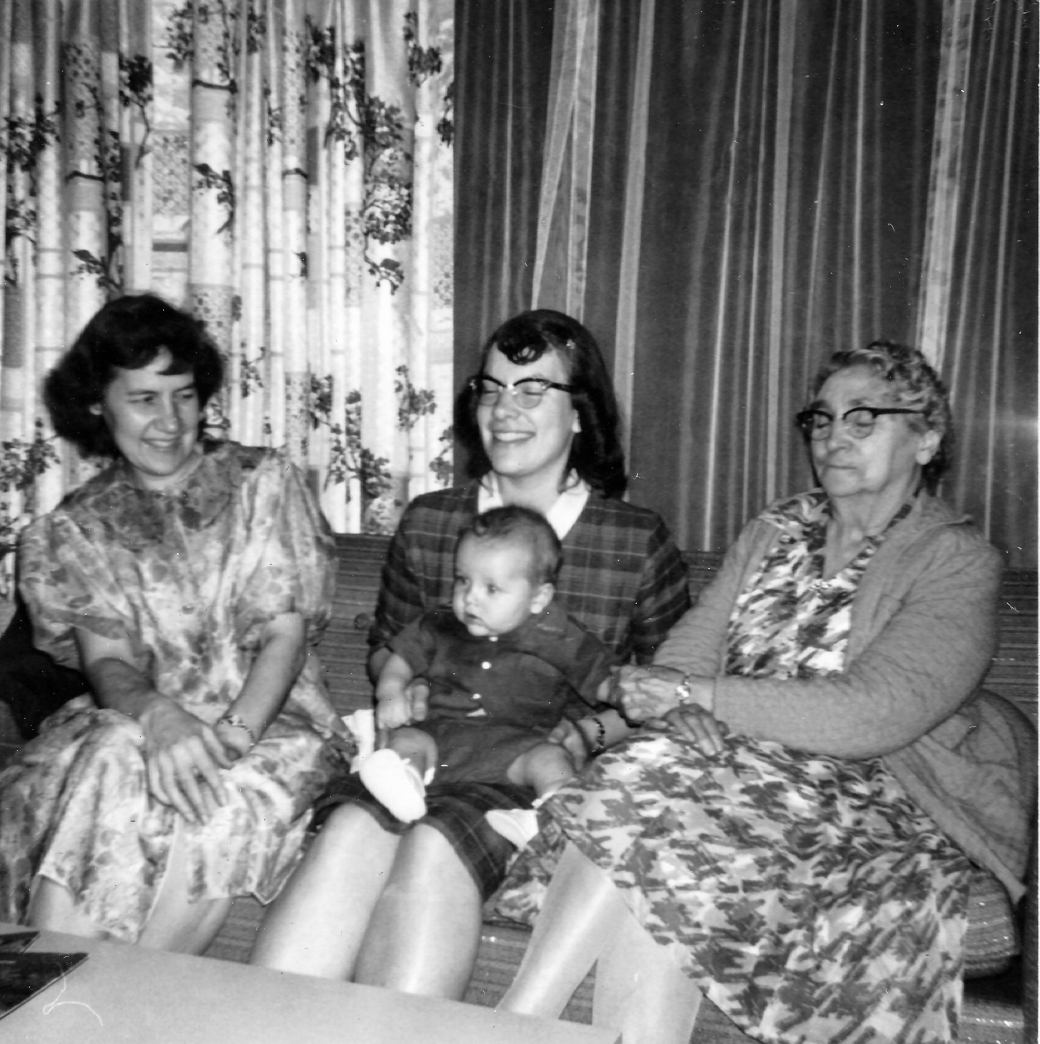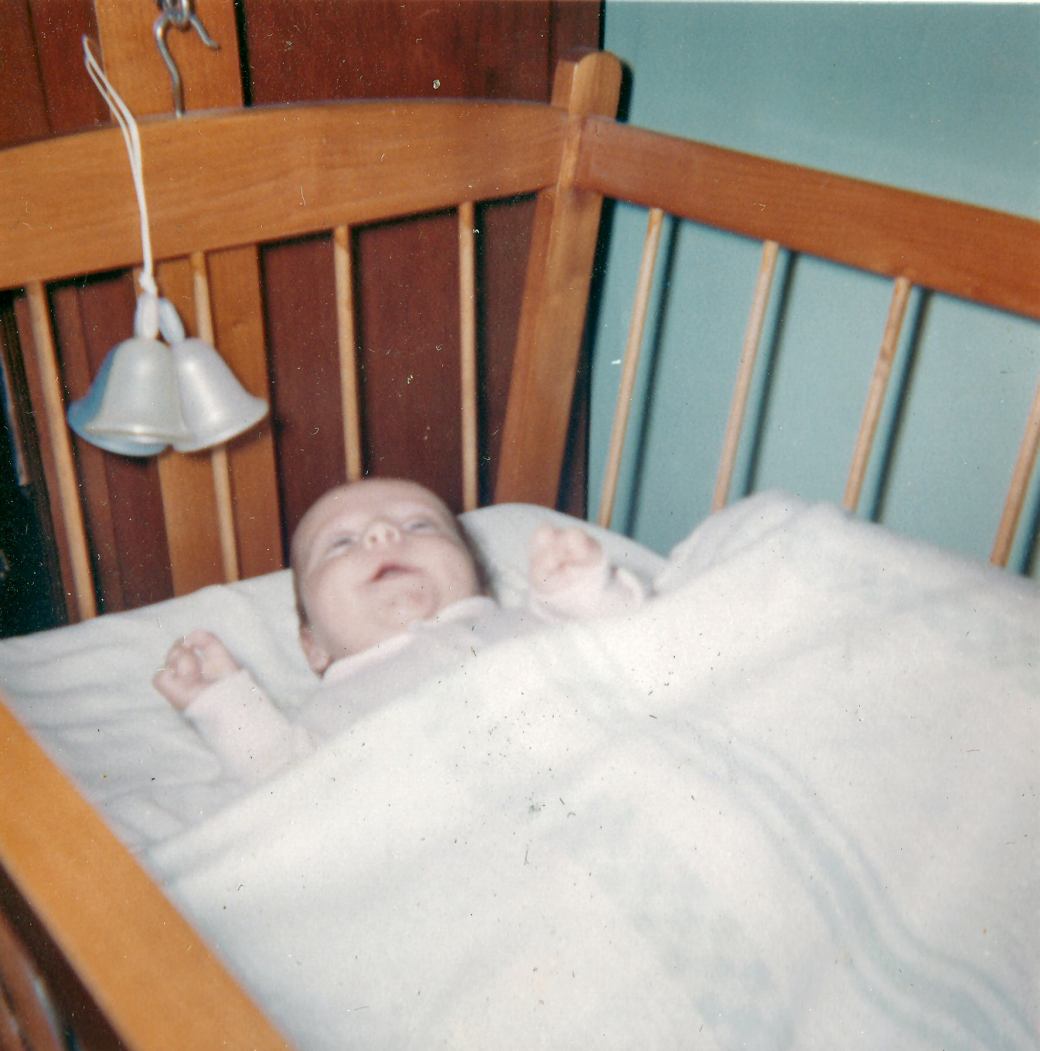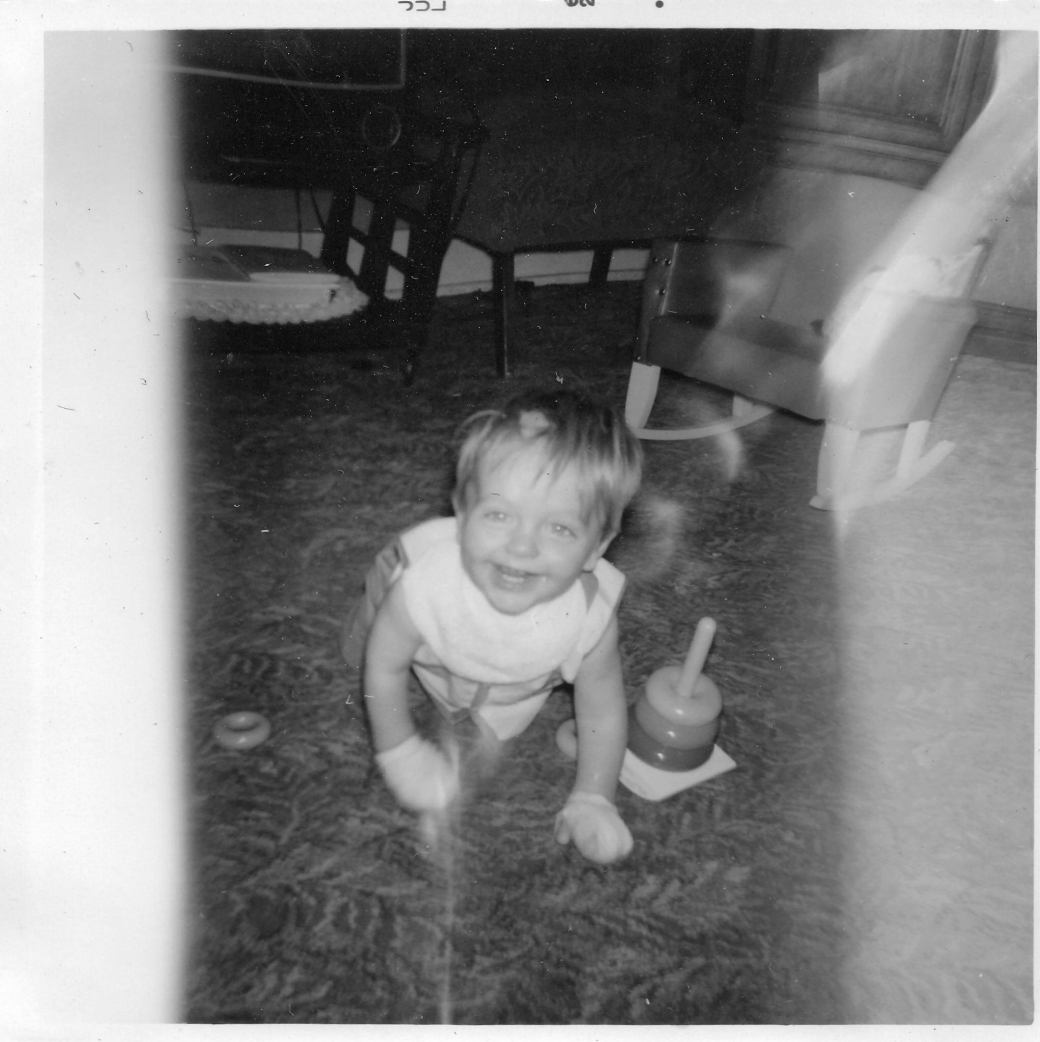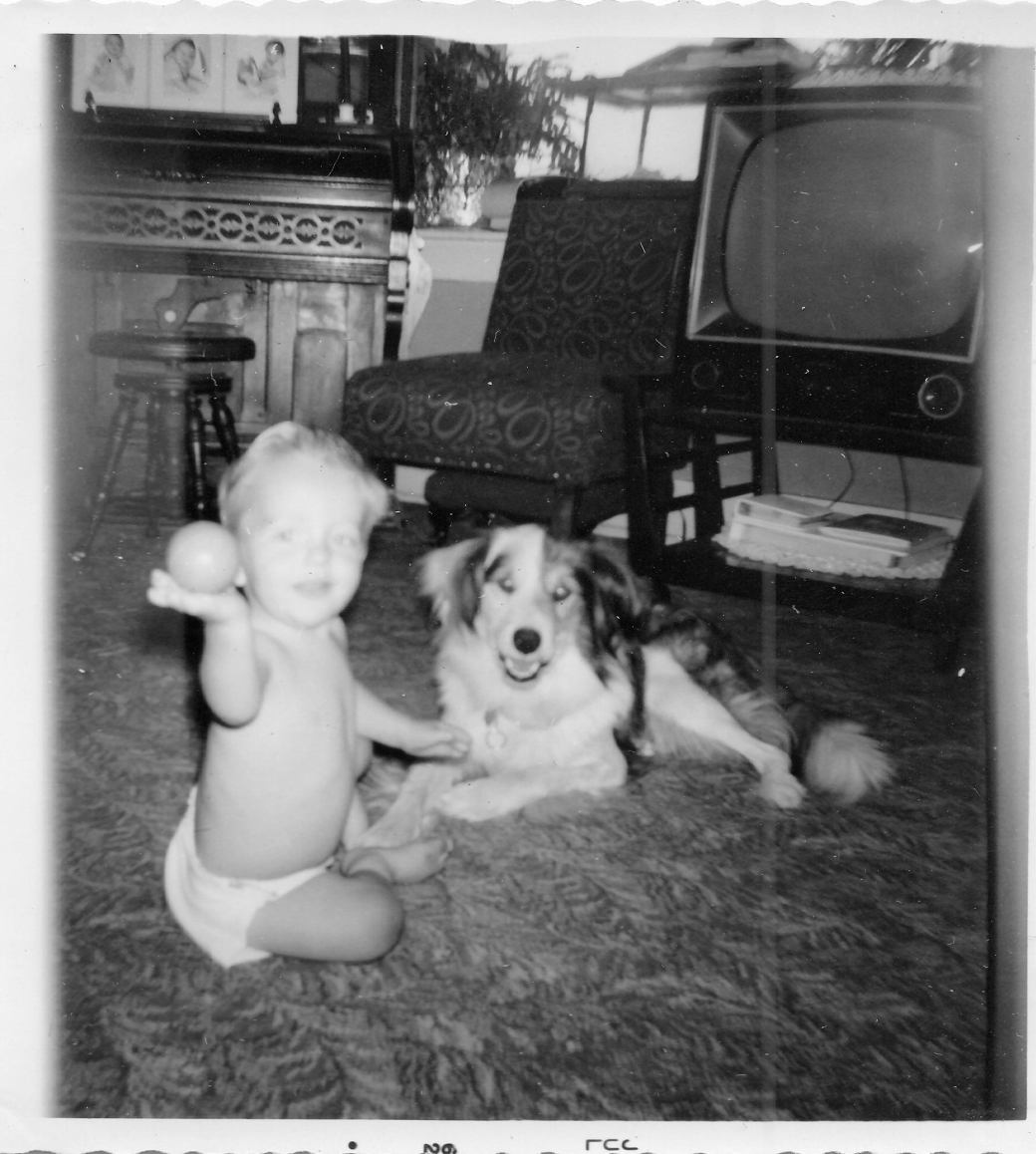My Preschool Years, With Birth Defects, Part 1
The first fragments of memory from my infancy come from sometime between the ages of 3 and 4 years old, and none of my earliest memories concern my birth defects. I was too young to know that there was anything wrong. My parents loved me, and I was secure, as babies typically are. Whether my birth defects made me different than “normal” babies did not concern me. Looking back at the earliest pictures of my parents, grandparents, uncles, aunts and cousins holding me and interacting with me, it is clear that I am loved. I am also smiling and laughing in many of these early photos. I am sure that I was in pain at times, but that was never the focus, at least not from anything I can recall. Early trauma can leave its mark, but a stable, supportive family environment can counteract those effects, based on my experience.
My earliest conscious memory was of wrinkled nylon stockings around the ankle of an old woman standing on the carpet in a sunken living room, an understandable memory from a baby viewing the adults in their world from floor level. It is just a flash in the back of my mind, with little context. Talking with my mom in later years about this memory, I have concluded that the ankle belonged to “Beste,” my Norwegian grandmother, my dad’s mother. She was totally smitten with me. My birth defects made no difference to her. My father was her only son, and he was adopted. She so wanted my dad to provide her with a grandson, and I was born, to her delight.

That my earliest memory, however fragmentary, is of her, is testament to her affection for me. She babysat me while my mom worked part-time as an office secretary, so I spent a lot of time with her. It must have made a deep impression on me, because my second memory, although not of her specifically, is of being on a train with her. I was frightened by the train whistle. I am not completely certain of this memory, because the story was frequently recounted to me years later, so it may be more a memory of those retellings than of the actual event. I was about 3 years old, and Beste was taking me on my first train ride.
My third memory is more vivid and traumatic. When I was about 4 ½ years old, Beste died. I had no idea what that meant at the time, but I do remember being told by my mother that I would never see her again. Apparently, I was asking to see her, and my mom had to somehow explain why I couldn’t. I remember crying inconsolably about it, confused by the loss of one of my favorite people in the world.

What I find noteworthy about these earliest memories is that they have nothing to do with my birth defects. Apparently, this is not that unusual. The fingers and toes I was born with were all I knew from birth, so they were what became familiar to me. I developed no sense there was anything wrong. My fingers were my fingers, and I learned to use them as they were. They were a part of me, and therefore nothing remarkable. Although I remember nothing about my parents’ attitude toward my birth defects, I do know, through conversations with my mom once I was an adult, that they tried to always treat me like there was nothing wrong with me and encouraged others in my life to do the same.

 My earliest memories also include frequent visits to Seattle Children’s Hospital for surgeries and check-ups. These memories are hazy and run together. Because my condition is relatively rare (amniotic band syndrome, or ABS, occurs in 1 out of 1,200 births to possibly only 1 out of 15,000 births), I was often the center of attention for a group of doctors and eager interns. I was poked, prodded, and photographed and put on display repeatedly so more could be learned about ABS diagnosis and treatment. I remember doctors poking my left foot with a needle in various places and asking me if I felt anything, as they tested me for pain perception. I remember doctors manipulating my fingers, toes, feet and legs to test my range of movement and dexterity. Thankfully, I don’t remember much of this as traumatic. For me, it was just a “normal” part of growing up. The Children’s Hospital was a child-friendly place, with bright, open waiting rooms and lots of toys and books for children.
My earliest memories also include frequent visits to Seattle Children’s Hospital for surgeries and check-ups. These memories are hazy and run together. Because my condition is relatively rare (amniotic band syndrome, or ABS, occurs in 1 out of 1,200 births to possibly only 1 out of 15,000 births), I was often the center of attention for a group of doctors and eager interns. I was poked, prodded, and photographed and put on display repeatedly so more could be learned about ABS diagnosis and treatment. I remember doctors poking my left foot with a needle in various places and asking me if I felt anything, as they tested me for pain perception. I remember doctors manipulating my fingers, toes, feet and legs to test my range of movement and dexterity. Thankfully, I don’t remember much of this as traumatic. For me, it was just a “normal” part of growing up. The Children’s Hospital was a child-friendly place, with bright, open waiting rooms and lots of toys and books for children.

Then there were the surgeries, most of them focused on improving the functionality of my hands, legs and feet. The amniotic band that encircled my left ankle had to be removed to improve circulation to my left foot and enable as much normal development of the foot and toes as possible. Fingers and toes lacking bones had to be removed, which meant the loss of a few toes on my right foot and of the pinky on my left hand. The web of flesh that joined my fingers together for about half their length had to be cut into to separate my fingers and improve my dexterity. Following the surgeries were the casts and bandages, and the stitches that had to be removed later.

Growing up with parents and other relatives that loved me and supported my parents through these difficult times had a great impact on me, though. I remember these years as mostly happy times. Playing and snuggling with my dad’s dog at my Beste’s house. Later, playing and petting my own kitty, Fluffy, when my parents moved into their own home. Grandparents, aunts and uncles all eager to hold and play with the new baby. And then my cousins who were born not too long after me, and my sister, Karen, who was born when I was almost 4 years old. I may have been born with birth defects, but the loving closeness of family enabled me to grow up as a typical, loved and well-supported infant.

I hope that the story of my early years is reassuring to parents who have a child with birth defects, whether they have ABS, like me, or some other condition. Having birth defects that require regular medical intervention can be painful and traumatic, for the whole family, but as long as the parents and other family members consistently provide a supportive, loving environment, the child can thrive.

Our church was also a big support for my family, combined with a deep faith in God. At such an early age, I had no concept of God, and in many ways, to a young infant, the parents represent God. Remembering how my parents held me in their arms, literally and figuratively, has become a reminder that God continues to do the same for me today. “If I take the wings of the morning, and dwell the uttermost parts of the sea, even there your hand shall lead me, and Your right hand shall hold me.” (Psalm 139: 9-10, NKJV). Words like these became a comfort to me as I got older and had to deal with the difficulties of life, many of which were directly caused by my birth defects.
My happiest and richest preschool memories are from the ages of 4 and 5 (and I am including age 5, even though I did attend kindergarten that year). I will talk about those years in my next blog entry. It was during those years that my circle of people expanded to include supportive adults outside my family. I also made friends with other children in my neighborhood, who did not seem to be put off by my birth defects. There was little in my preschool years to foreshadow the routine ostracism and bullying I would later experience in grade school.


I’ll be waiting for this post… 🙂 I’ve a 8 months old baby boy with ABS. Thanks for Share Your experience.
LikeLike